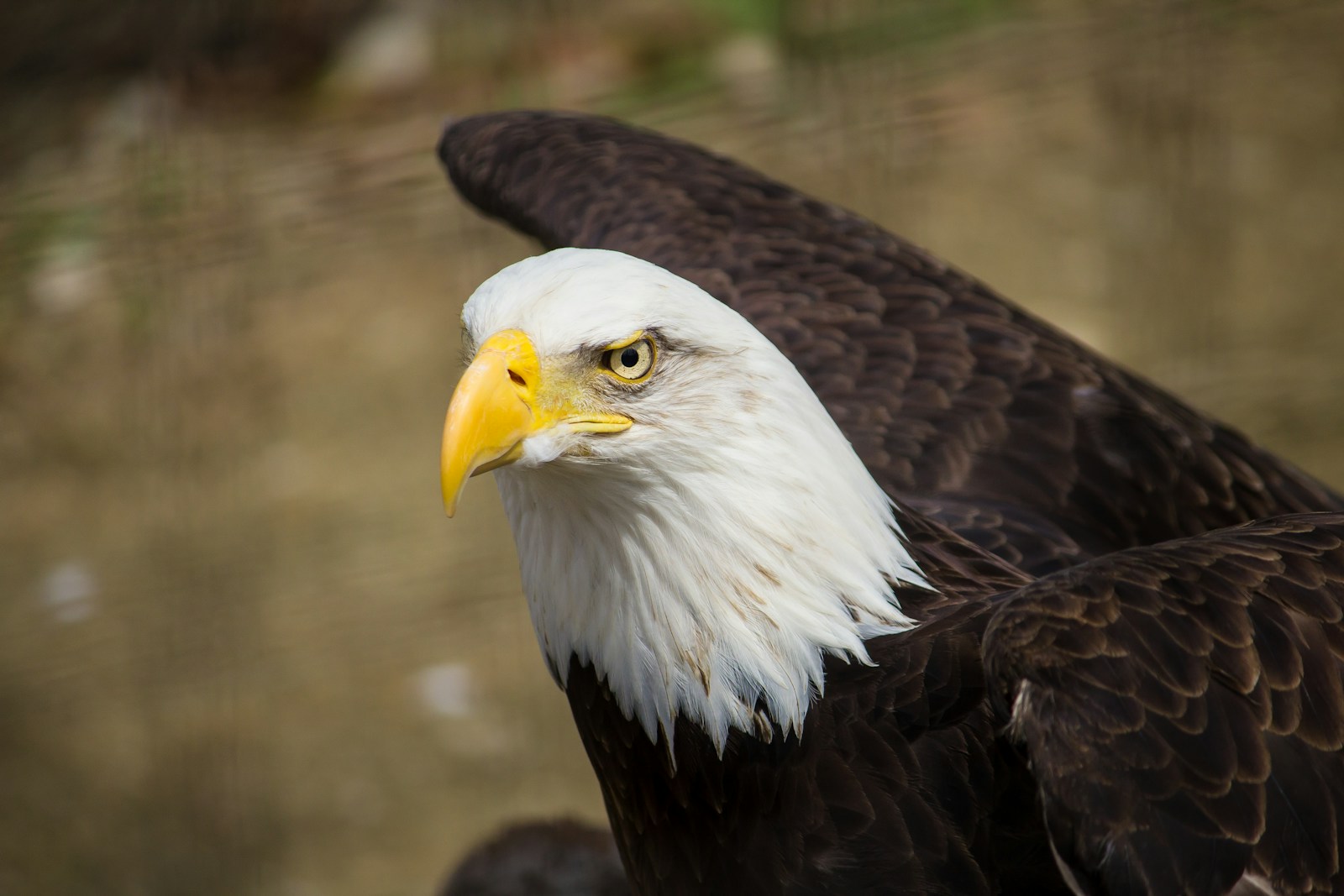The majestic bald eagle, America’s national bird and a living symbol of freedom, has made a remarkable comeback after facing near extinction in the mid-20th century. With their impressive seven-foot wingspan, distinctive white head and tail feathers, and fierce yellow eyes, these magnificent raptors captivate wildlife enthusiasts and casual observers alike. Today, thanks to conservation efforts, bald eagles thrive across the United States, offering spectacular viewing opportunities for those who know where to look. From Alaska’s pristine wilderness to Florida’s wetlands, specific locations across America provide exceptional chances to witness these iconic birds in their natural habitat. This guide explores the premier eagle-watching destinations throughout the country, highlighting the best times to visit and what makes each location special for observing these remarkable birds of prey.
Alaska’s Chilkat Bald Eagle Preserve
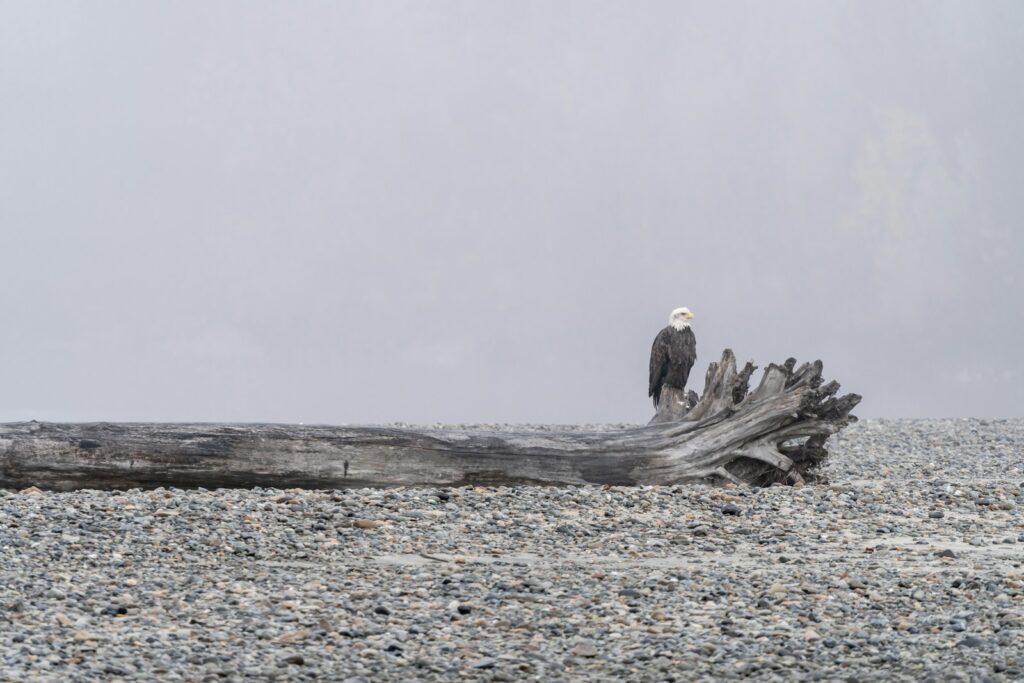
For the ultimate bald eagle viewing experience, few places rival the Chilkat Bald Eagle Preserve near Haines, Alaska. Every fall, this 48,000-acre sanctuary hosts the largest congregation of bald eagles in the world, with numbers often exceeding 3,000 birds. The eagles gather along a five-mile stretch of the Chilkat River, drawn by the late-running salmon that remain accessible due to the river’s unique thermal properties that prevent freezing. From October through February, visitors can observe hundreds of eagles perched in cottonwood trees or swooping down to catch fish, creating a wildlife spectacle unmatched anywhere else in North America. The preserve offers several viewing platforms and guided tours that provide safe observation points without disturbing the eagles’ natural behaviors.
Mississippi River’s Great River Road
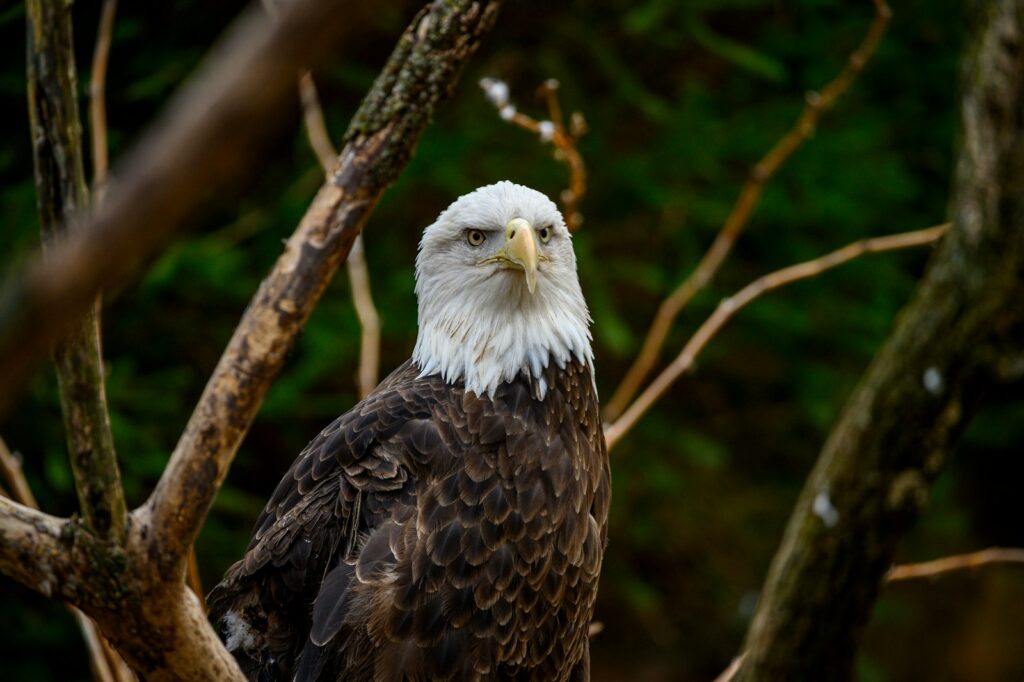
The mighty Mississippi River serves as a critical winter habitat for bald eagles, particularly along the Great River Road that stretches from Minnesota to Louisiana. When northern waters freeze over, eagles migrate south and concentrate along the open waters of the Mississippi, where they can still find fish – their primary food source. The stretch between Alton, Illinois, and Grafton offers spectacular viewing opportunities during winter months, with hundreds of eagles soaring above the bluffs and fishing in the river below. Towns along this route celebrate the eagle’s winter presence with festivals and guided eagle-watching tours, with January and February providing peak observation periods. The Lock and Dam systems create areas of open water that concentrate fish, naturally attracting hunting eagles and creating perfect viewing opportunities for eager bird watchers.
Klamath Basin, Oregon and California
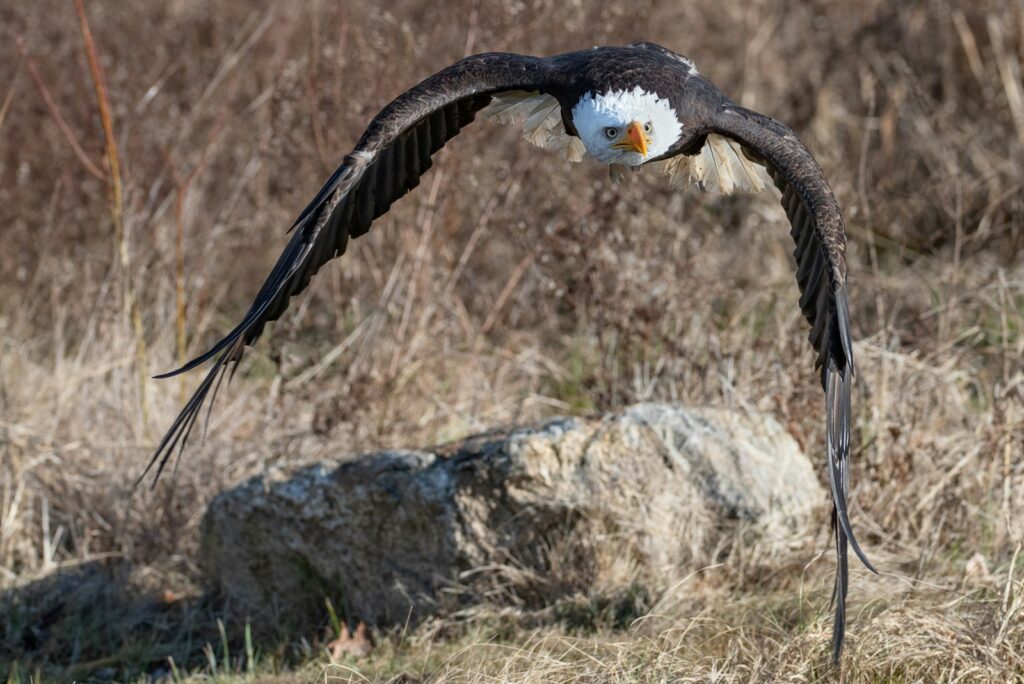
The Klamath Basin National Wildlife Refuge Complex spanning the Oregon-California border hosts one of the largest winter concentrations of bald eagles in the continental United States. Between November and March, up to 1,000 eagles migrate to this area, attracted by abundant waterfowl in the six refuges that make up the complex. Bear Valley National Wildlife Refuge serves as a nighttime roosting site, where eagles gather in old-growth forest before dispersing to hunt during daylight hours. The Lower Klamath and Tule Lake National Wildlife Refuges offer auto touring routes and observation points where visitors can watch eagles hunting over marshlands and agricultural fields. Dawn and dusk provide the most active periods for eagle observation, as birds move between roosting and feeding areas in impressive numbers.
Blackwater National Wildlife Refuge, Maryland
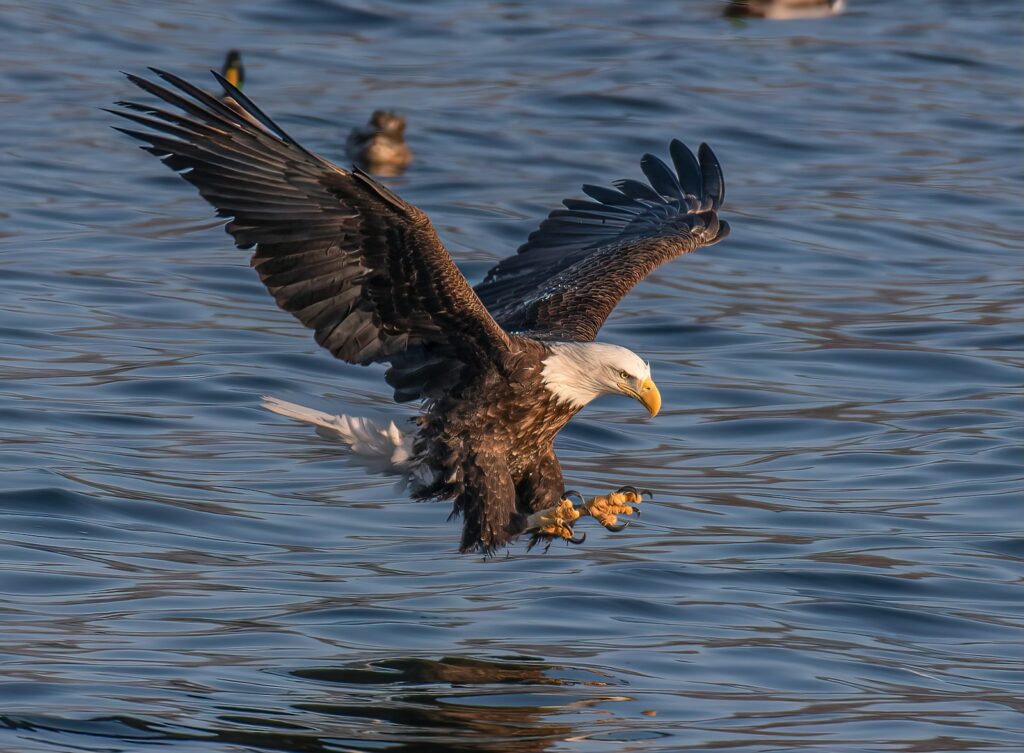
Located on Maryland’s Eastern Shore, Blackwater National Wildlife Refuge has earned its nickname as the “Everglades of the North” due to its extensive wetlands and remarkable biodiversity. The refuge boasts one of the highest concentrations of wintering bald eagles on the East Coast, with over 200 eagles present during peak season between December and March. Blackwater’s mixture of shallow water, abundant fish, and mature forests creates perfect hunting and nesting habitat for these birds of prey. The Wildlife Drive provides a convenient 4-mile auto route with multiple pull-offs where visitors can scan the marshes and tree lines for eagles without leaving their vehicles. Additionally, the refuge hosts an annual Eagle Festival in March that includes guided tours and educational programs focused on eagle conservation.
Conowingo Dam, Maryland
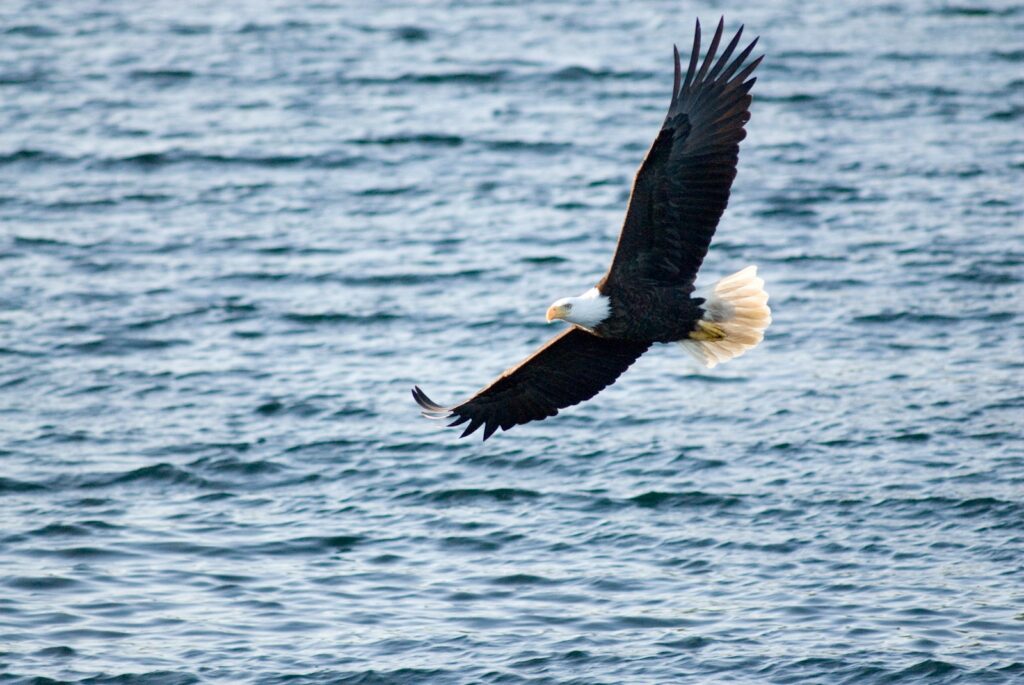
The Conowingo Dam on the Susquehanna River in northern Maryland has become famous among wildlife photographers and eagle enthusiasts for its extraordinary concentration of bald eagles. When the dam releases water, especially in late fall and winter, fish become stunned as they pass through the turbines, creating an easy feast for the eagles that gather by the dozens – sometimes even hundreds – to take advantage of this fishing opportunity. The Fisherman’s Park below the dam offers an accessible viewing platform where observers can watch eagles dive for fish, interact with each other, and perch on nearby trees. The predictable nature of this location makes it one of the most reliable places to photograph bald eagles in action, with November through February being the optimal viewing period. Some eagle photographers have been known to capture over 100 different eagles in a single day during peak season.
Skagit River, Washington
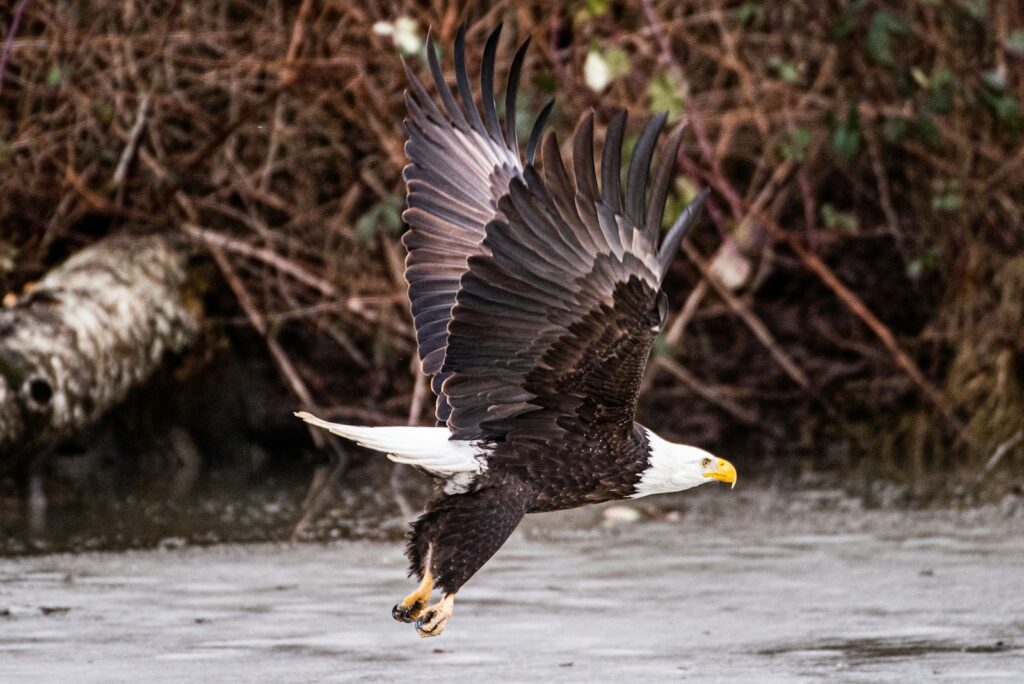
The Skagit River watershed in northwestern Washington hosts one of the largest wintering bald eagle populations in the contiguous United States. From December through February, hundreds of eagles gather along the river, drawn by the spawning salmon that provide an abundant food source during the challenging winter months. The Skagit Eagle Watching Center in Concrete, Washington serves as an excellent starting point for visitors, offering information about current eagle activity and viewing locations. Eagle-watching float trips down the Skagit provide a unique perspective, allowing visitors to drift quietly past eagles perched in riverside trees or feeding on salmon carcasses along the shoreline. The annual Skagit Eagle Festival in January features guided walks, educational presentations, and photography workshops celebrating these magnificent birds.
Lake Coeur d’Alene, Idaho
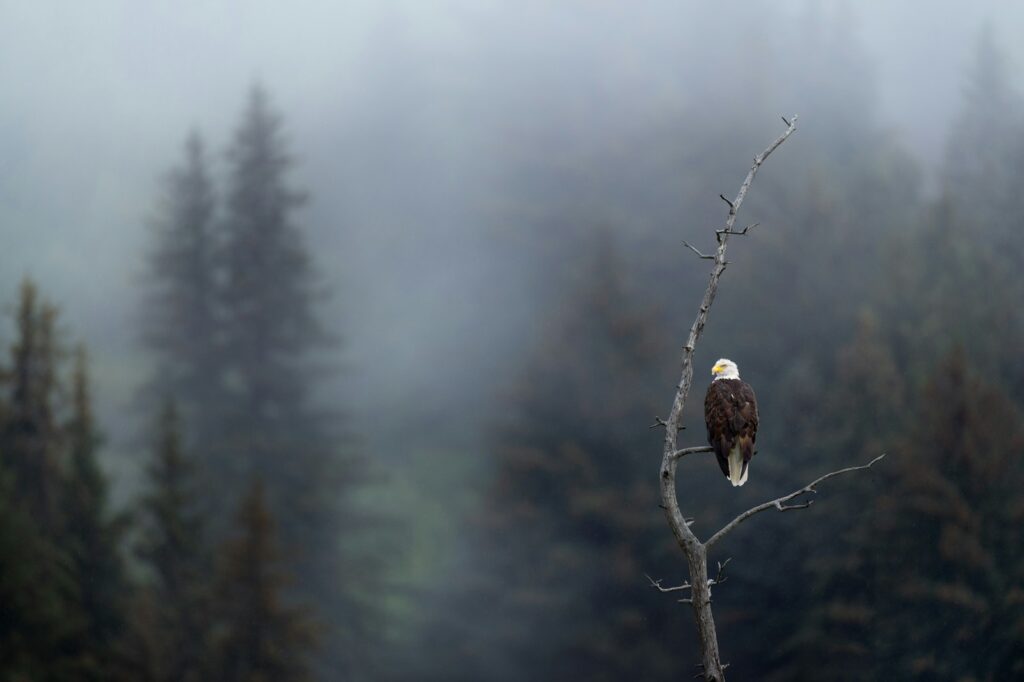
Each winter, Lake Coeur d’Alene in northern Idaho becomes a critical feeding ground for one of the largest concentrations of bald eagles in the western United States. The eagles arrive in November and remain through February, drawn by the kokanee salmon that spawn in Wolf Lodge Bay on the lake’s eastern shore. At the height of the season in late December, visitors often count more than 200 eagles feeding on the dying salmon or perching in the surrounding conifer forests. The Bureau of Land Management maintains the Mineral Ridge Trail and boat launch area, offering prime viewing opportunities with interpretive signs explaining eagle behavior and biology. The Lake Coeur d’Alene Cruise Line runs special “Eagle Watching Cruises” during peak season, providing a comfortable way to observe eagles from the water, even during the coldest winter conditions.
Reelfoot Lake, Tennessee
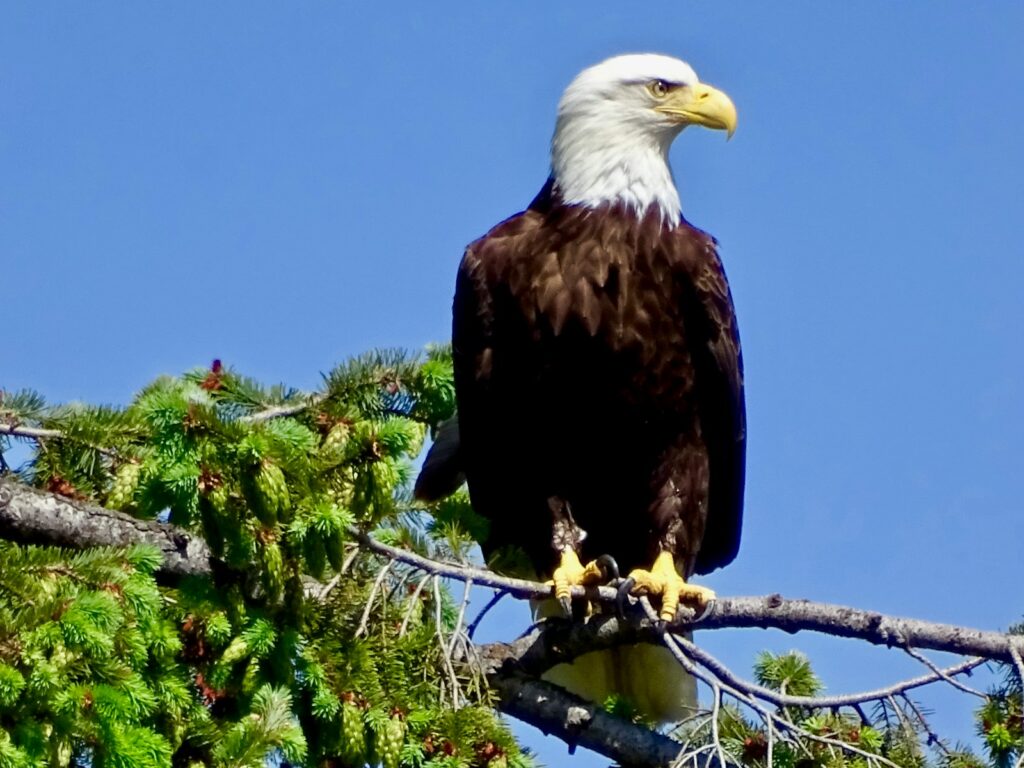
Created by powerful earthquakes in 1811-1812, Reelfoot Lake in northwestern Tennessee now serves as an important wintering ground for bald eagles from the Upper Midwest and Canada. The shallow lake rarely freezes completely, providing eagles with consistent access to fish throughout winter when other water bodies are iced over. More than 200 eagles typically arrive by December, with numbers peaking in January and February when the leafless trees make spotting these magnificent birds surprisingly easy despite their preference for the tallest perches. Reelfoot Lake State Park offers guided eagle-watching tours by boat and by van, led by knowledgeable naturalists who help visitors spot eagles and understand their behavior. The park’s annual Eagle Festival in February includes live raptor demonstrations, photography contests, and specialized tours focused on these charismatic birds of prey.
Glacier National Park, Montana
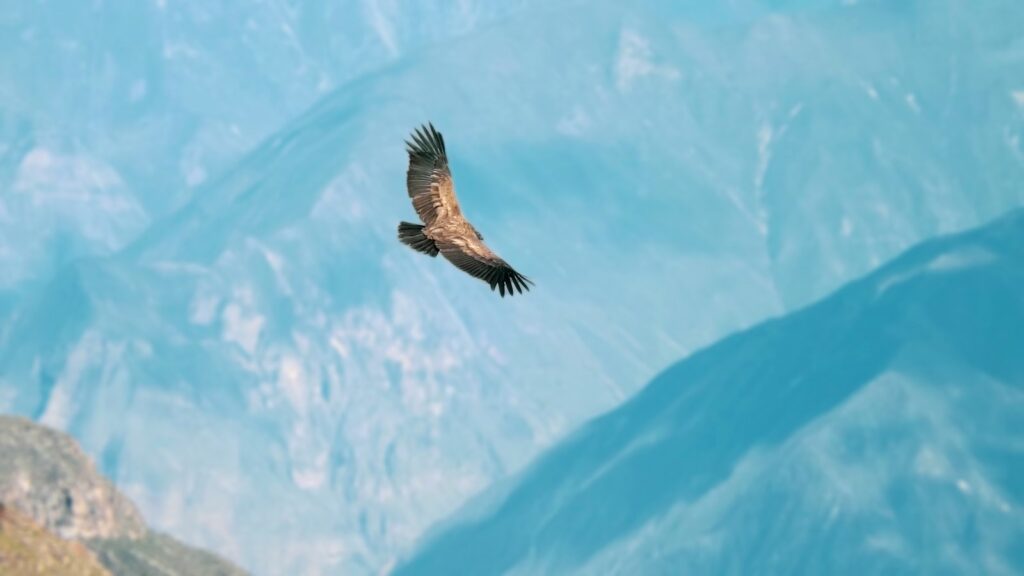
While many premier eagle-watching destinations focus on winter concentrations, Glacier National Park in Montana offers outstanding opportunities to observe bald eagles during the summer breeding season. The park’s pristine lakes and rivers support numerous nesting pairs, allowing visitors to witness the complete eagle life cycle from nest-building to fledging. McDonald Creek becomes a particular hotspot in autumn when migrating kokanee salmon attract dozens of eagles for a pre-winter feeding frenzy. The park’s boat tours on Lake McDonald and St. Mary Lake frequently spot eagles fishing or delivering prey to prominent nests that are often used year after year. The Going-to-the-Sun Road provides access to multiple eagle territories, with pullouts where visitors can safely set up spotting scopes without disturbing these federally protected birds.
Chassahowitzka National Wildlife Refuge, Florida
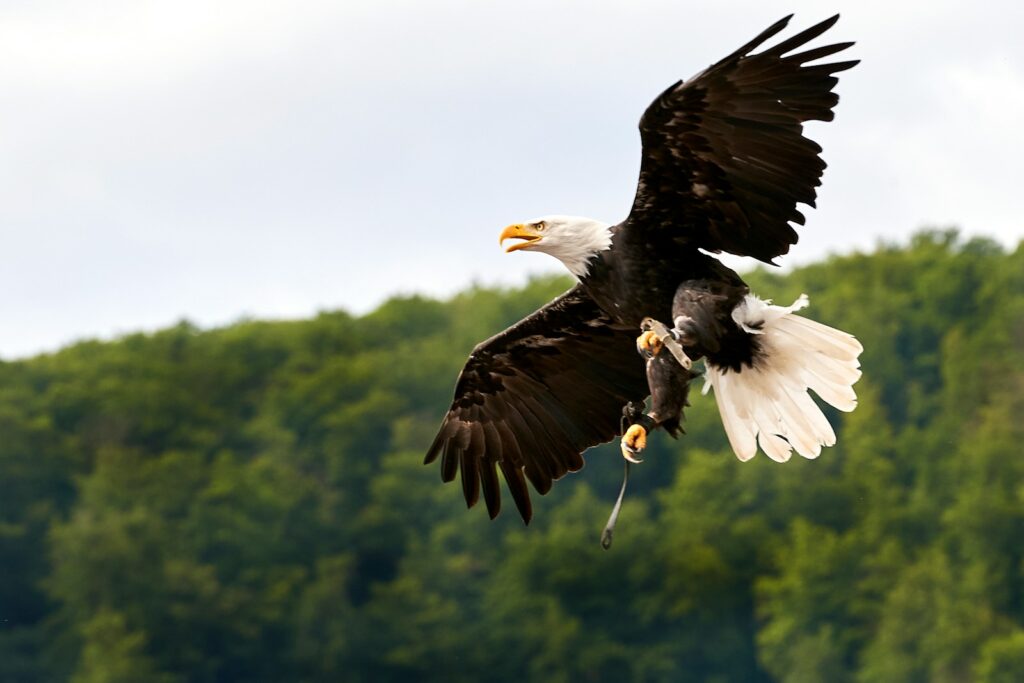
Florida hosts the largest breeding population of bald eagles in the contiguous United States, and the Chassahowitzka National Wildlife Refuge on the Gulf Coast offers exceptional viewing opportunities year-round. Unlike northern eagle populations that often migrate seasonally, Florida’s eagles tend to remain in their territories throughout the year, making this a reliable destination regardless of season. The refuge’s unique combination of coastal marshes, hardwood swamps, and saltwater estuaries creates ideal hunting grounds for the twenty-plus pairs that nest in and around the protected area. Kayak tours through the refuge’s waterways provide intimate eagle-watching experiences, allowing visitors to glide quietly beneath nesting sites while maintaining a respectful distance. Fall and winter months coincide with nesting season in Florida, giving visitors the chance to observe courtship, nest maintenance, and eventually, eaglets.
Harrison Bay State Park, Tennessee
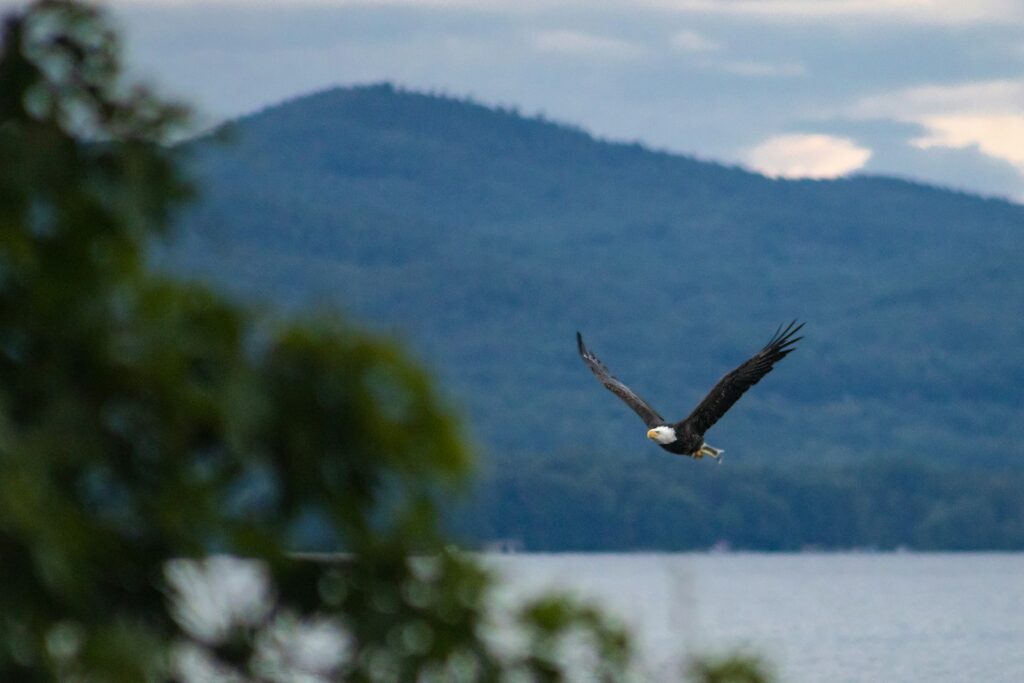
Located along Chickamauga Lake near Chattanooga, Harrison Bay State Park has developed a reputation as one of the Southeast’s premier eagle-watching destinations. The park’s diverse habitat of shallow water inlets, wooded peninsulas, and protected coves creates ideal conditions for the dozen or more eagle pairs that nest in the area. Unlike many northern viewing locations that peak in winter, Harrison Bay offers year-round eagle watching opportunities, with resident birds visible in all seasons. The park has installed “Eagle Cams” on active nests, allowing visitors at the nature center to observe nesting behaviors up close without causing disturbance. Guided pontoon boat tours navigate visitors to known territory boundaries and fishing grounds while providing educational commentary about eagle conservation success stories. The park’s annual Eagle Fest in January features guided hikes, wildlife presentations, and specialized programming about these magnificent birds.
Upper Mississippi River National Wildlife and Fish Refuge, Minnesota/Wisconsin
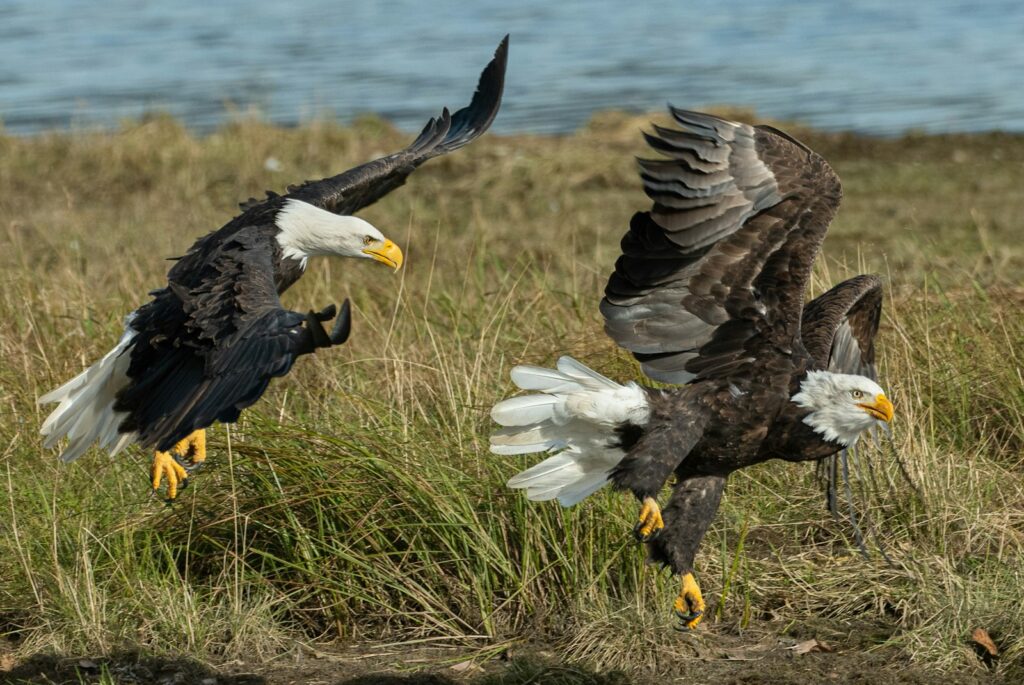
Spanning 261 miles across four states, the Upper Mississippi River National Wildlife and Fish Refuge hosts remarkable concentrations of bald eagles throughout the year. While winter brings migrating birds from Canada, the refuge also supports one of the highest densities of nesting eagles in the lower 48 states during summer months. The refuge’s unique “Driftless Area” features steep bluffs and protected valleys that create ideal nesting habitat high above the river’s main channel. Observation platforms at strategic locations like Wabasha’s National Eagle Center provide excellent viewing opportunities where visitors can frequently spot multiple eagles at once. The refuge’s Lock and Dam systems create tailwater areas that remain open even during the coldest weather, concentrating fish and creating eagle feeding hotspots throughout winter. Specialized eagle-watching cruises operate from river towns like Red Wing, Minnesota, and Prairie du Chien, Wisconsin, during peak season.
Tips for Responsible Eagle Watching
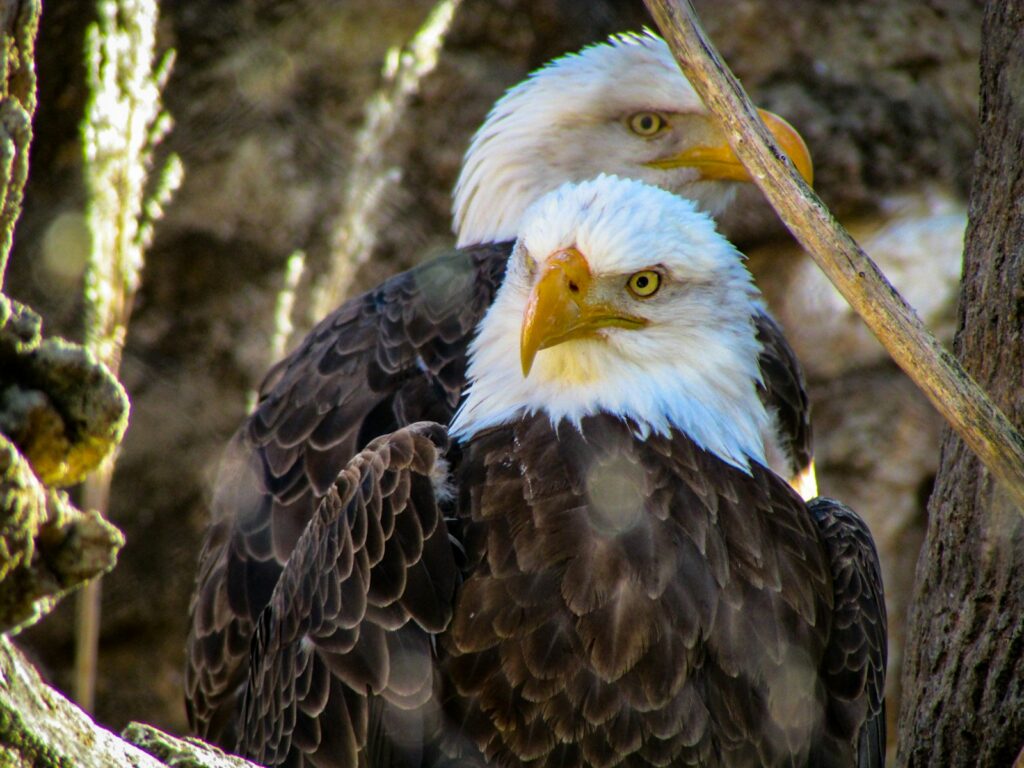
When seeking out bald eagles in any location, responsible viewing practices help protect these magnificent birds while enhancing your experience. Always maintain a minimum distance of 330 feet (100 meters) from active nests to prevent disturbance that might cause eagles to abandon eggs or young. Use binoculars or spotting scopes rather than approaching too closely, as eagles are sensitive to human presence despite their imposing size and predatory nature. Avoid loud noises, sudden movements, or pointing directly at eagles, which they may perceive as threatening behavior. Many premier viewing locations offer guided tours led by experienced naturalists who know how to approach eagles respectfully while providing educational context about their behavior and conservation. Finally, consider visiting designated eagle watches or festivals where viewing areas have been carefully established to minimize impact while maximizing observation opportunities.
The American bald eagle’s recovery represents one of our nation’s greatest conservation success stories, transforming from an endangered species to a thriving population that can now be enjoyed across diverse habitats nationwide. Each viewing location offers something unique – from Alaska’s unparalleled concentrations to Florida’s year-round residents – providing opportunities to connect with America’s national symbol in its natural environment. Whether you’re a dedicated wildlife photographer seeking the perfect shot or a casual nature enthusiast hoping to glimpse these magnificent birds, these premier destinations offer reliable opportunities to witness bald eagles in action. As you plan your eagle-watching adventure, remember that today’s abundant viewing opportunities exist because of dedicated conservation efforts that brought these birds back from the brink – a powerful reminder of what’s possible when we commit to protecting our natural heritage.

